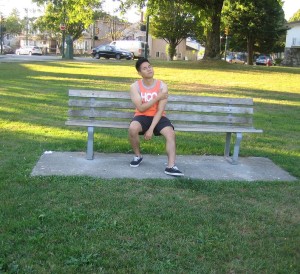The arm pain that occurs when playing volleyball can be due to various causes. The individual can sustain general overuse damage after playing for many years or develop an abrupt injury by spiking a ball and applying excess pressure on the arms at once.
Take note that the pain can originate from damage to the tendons, joints, muscles or bone in the arm. A doctor should be consulted in order to assess the precise source of pain before home remedies are attempted. If you will register for first aid training, you can help ease the discomfort.
Overuse
The usual conditions sustained from overusing the arms include tendonitis and bursitis. Lateral epicondylitis or tennis elbow is considered as the usual source of arm pain among volleyball players. The condition is caused over time once the tendons in the forearm become frayed.

Each time the individual strikes the ball, the pressure can cause pain and inflammation when he/she has tennis elbow. As for wrist tendonitis, it is also a common condition among volleyball players that develops once the inflamed tendons in the wrist become swollen. When it comes to bursitis, it usually attacks the elbow and indicates an inflamed bursa sac that becomes swollen and irritated when the individual strikes a ball.
Injuries
Spiking the ball can lead to various injuries which includes finger or wrist sprains or breaks, dislocated shoulders and rotator cuff injuries. The arm pain though not directly in the arm can radiate down and the throbbing persists until the source of pain is treated.
Wrist and finger sprains are quite common during volleyball once the force of the ball strikes the hand at an unusual angle or with excessive force. As for shoulder dislocation, it is also common and typically occurs when bending too far back or upward to strike the ball. The pain from a dislocated shoulder is excruciating up to the fingertips.
Treatment
The individual should seek immediate medical care if the shoulder is dislocated upon hitting the ball. He/she will be fitted with a sling to immobilize the arm and given anti-inflammatory medications.
The sprains are usually managed with the RICE method (rest, ice, compression and elevation). The sprained wrists and fingers are wrapped to immobilize them and the individual is instructed to keep the arm raised as the sprain heals and applying ice when it swells. The doctor will wrap the arm right below the elbow if tennis elbow develops and he/she is encouraged to rest the arm as much as possible. In some cases, cortisone shots can be given to manage bursitis in the elbow or undergo a surgical procedure to drain the sac containing the fluid buildup that is responsible for causing the pain. Wrist tendonitis can also be treated with rest and cortisone shots.
Prevention
Injuries sustained while playing volleyball were treated in the emergency department. A vital step to prevent arm pain is to observe proper stretching. The warmup exercises should be done for three minutes such as running in place or using an elliptical trainer. This will help prepare the body and then followed by 10 minutes of slow, controlled stretching to help avoid overuse damage. By maintaining the fitness level during the off-season, it can help reduce the risk for injury. Additionally, it is also important to wear protective gear if needed and make sure that the space where the individual plays in is safe and free from any obstacles.
